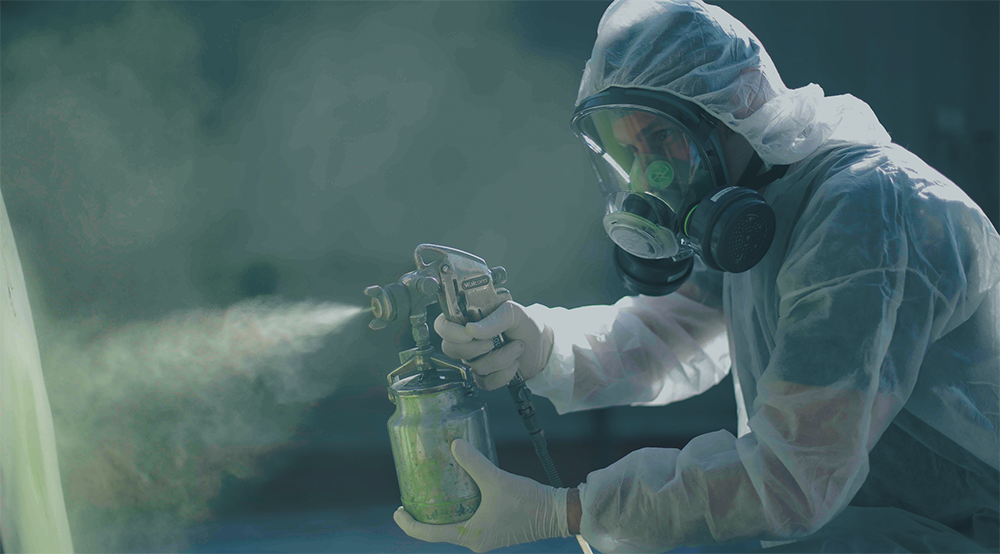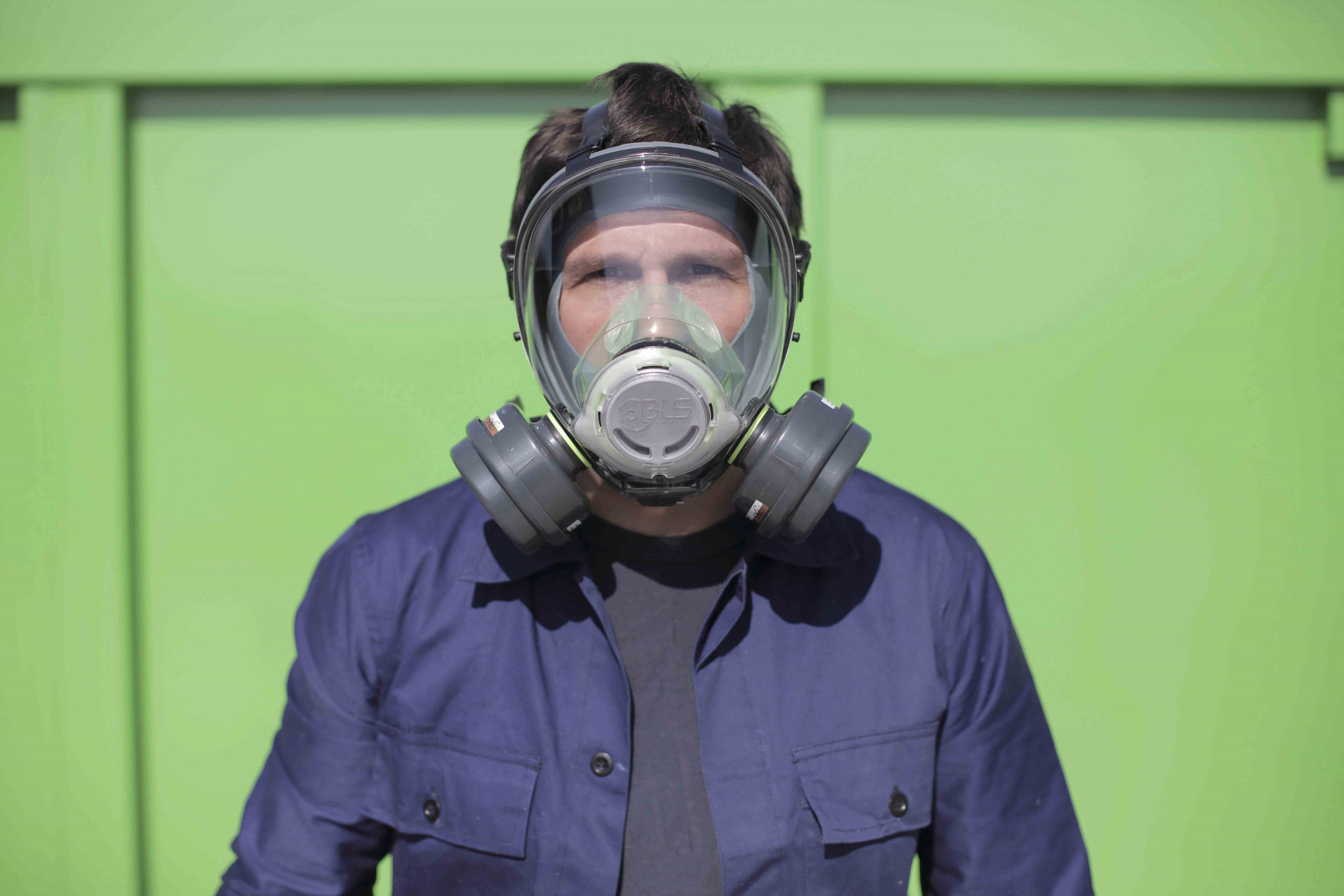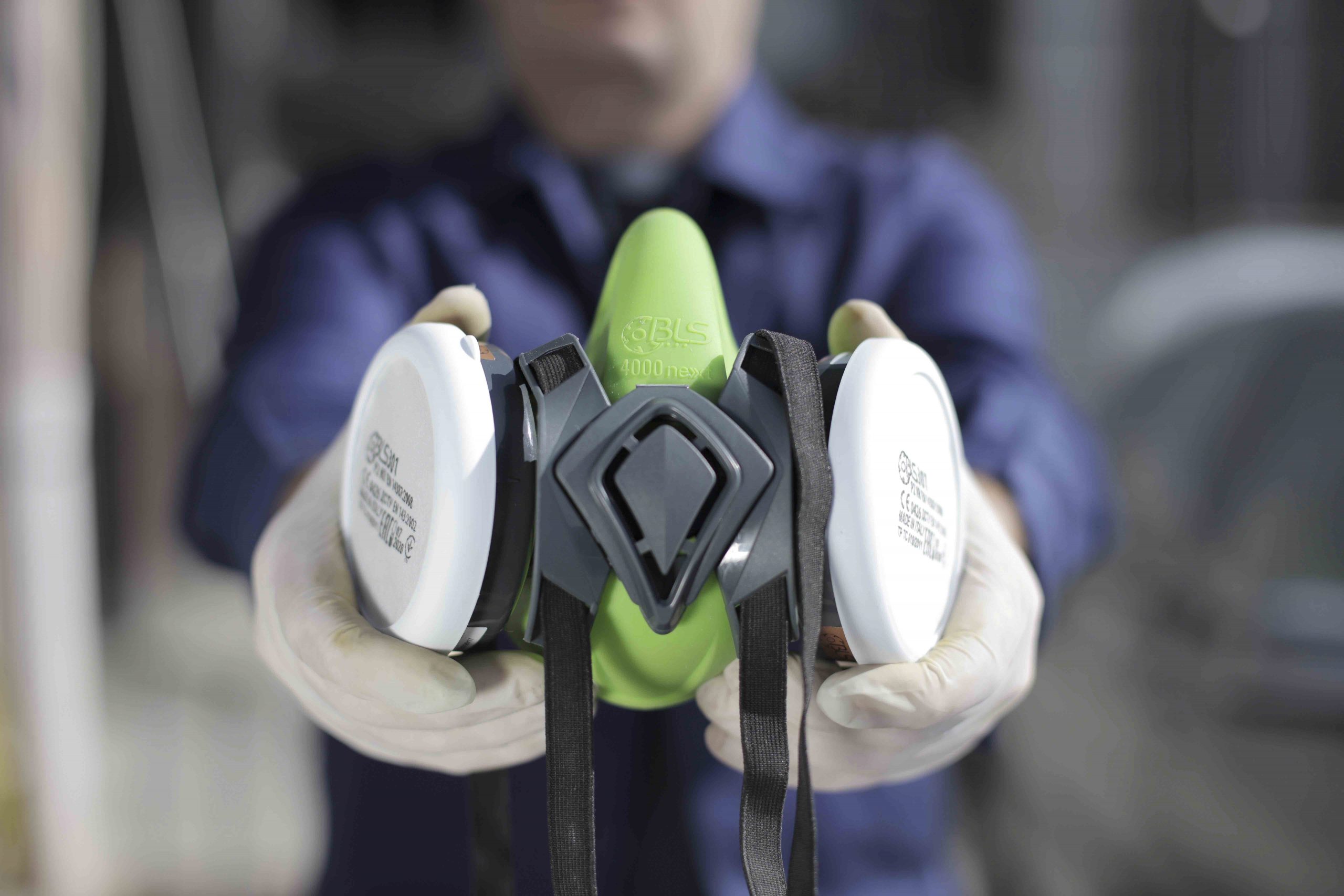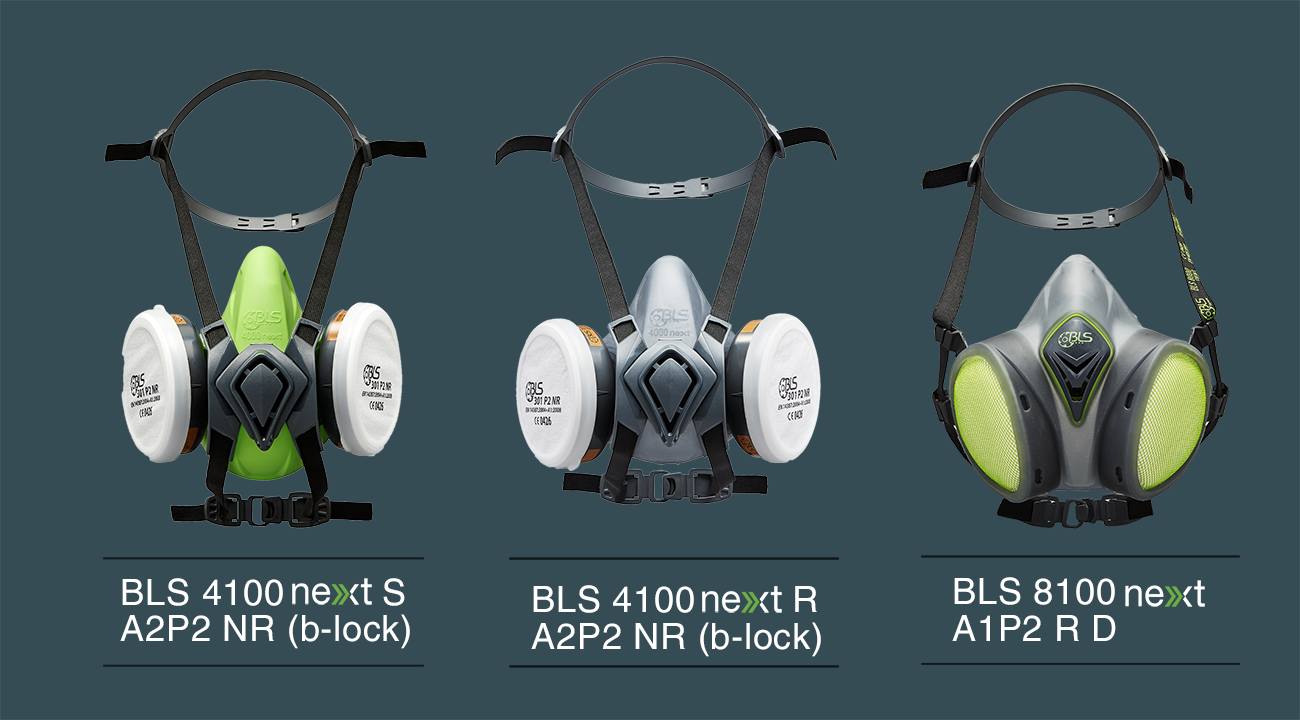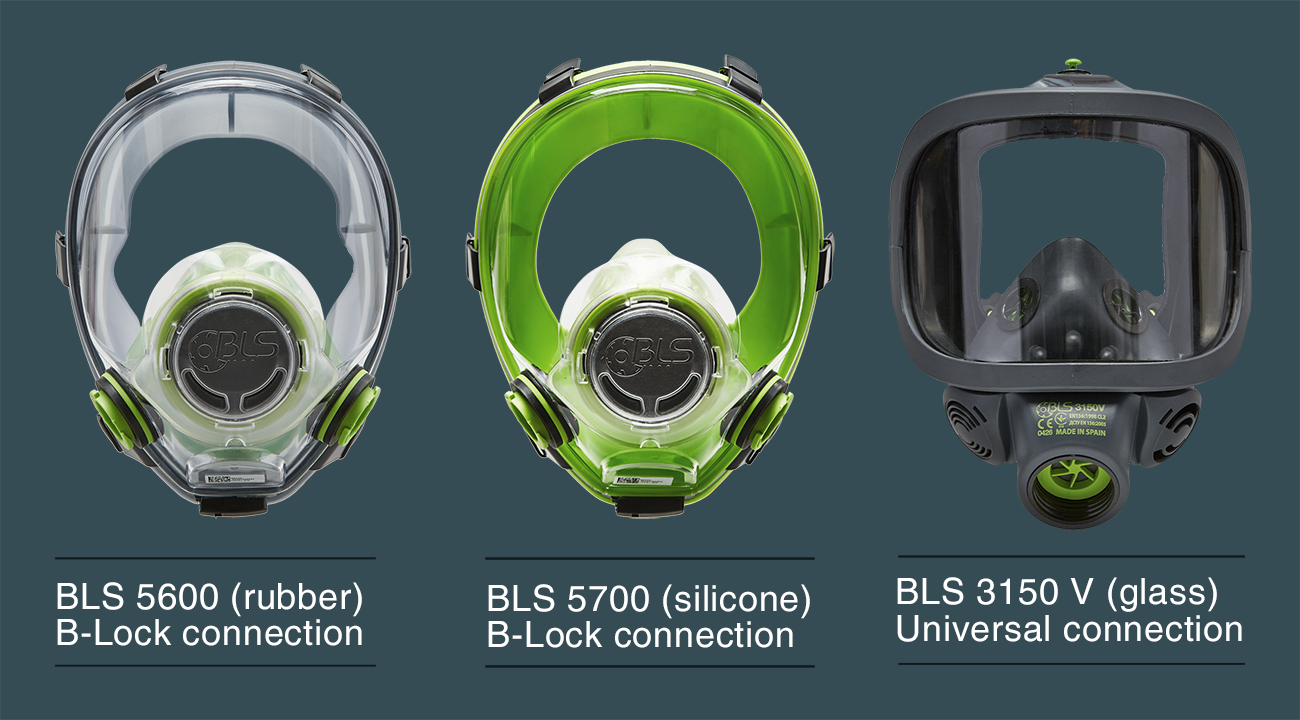Health risks of painting
In the volume of the proceedings of the conference Attività di verniciatura: salute e sicurezza held in Cremona on 28 May 2009, the carcinogenicity of some ingredients that make up the paints still used today during painting operations was ascertained.
In particular, in the case of some metal-based pigments, hexavalent chromium compounds stand out as the main components implicated in the development of lung cancer (see barium chromate, strontium chromate, lead sulphochromate yellow, lead molybdate red). Many work situations are characterised by exposure to these agents: the woodworking, automotive, shipbuilding and mechanical engineering industries are just the main ones.
What happens to the respiratory tract during painting operations?
Exposure to chemicals occurs mainly via inhalation due to the potential airborne dispersion of paint components.
During the activity, high concentrations of various substances are released into the air and, in the case of spray painting, also outside the airborne spray (aerosol).
Isocyanates, for example, are not volatile, but spread together with aerosols in the form of dust in very high concentrations.

What are polyurethane paints?
Polyurethane paints are used in a variety of applications and are highly resistant and leak-proof.
They are used extensively in the automotive and woodworking industries, for anti-corrosive treatments, for sealing floors, etc.
These applications work so well because they use so-called polyurethane paints, "two-component" paints consisting of resins and hardeners: the latter contain isocyanates, which through a chemical reaction caused by interaction with the resins produce a layer of polyurethane paint.
Why are isocyanates harmful?
Isocyanates are reactive or sensitising substances, i.e. they cause the exposed person to develop sensitisation reactions; in other words, allergies.
Once sensitisation has been acquired, this condition remains throughout life.
It should be noted that isocyanates are also contained in resins without hardeners.
What are the main effects on respiratory health?
- Irritation of the upper airways: painters have an increased prevalence of irritative symptoms of the first airways.
- Rhinitis and asthma: there is a known association between occupational exposure to several paint constituents and the occurrence of rhinitis and/or asthma.
- Chronic obstructive pulmonary disease (COPD): some authors report an increased prevalence of chronic bronchitis in people exposed to long-term organic solvents, probably due to the added irritative effects on the bronchial mucosa.
- Cancer: The risk of lung cancer is increased in painters compared to non-exposed individuals and the general population, even after balanced re-evaluations for confounding factors such as smoking.
The International Agency for Research on Cancer, IARC, classifies this activity as a human carcinogen (class 1).

Class 1 carcinogens are not always banned because the effect always depends on the dose.
"A substance may be carcinogenic if taken at a specific dose or at a higher dose, assessed in the laboratory, and may not be carcinogenic at the dose with which people come into contact in everyday life." (Facciamo chiarezza, 12 December 2018, www.airc.it)
The classification of carcinogens sees a division into 4 groups: group 1 lists substances that have produced sufficient evidence of carcinogenicity in humans. Currently, more than 120 agents have been identified at this level of severity.
What are the other body health effects?
In addition to inhalation through nose and mouth, diseases induced by painting activities can result also from contact with skin and eyes.
Increases in cases of bladder cancer and mesothelioma have also been reported among painting workers.
Contamination through the skin also causes various types of eye irritation, such as redness, conjunctivitis and chronic irritation.

What are the main chemicals responsible for health risks in paints?
Volatile substances are released both during the painting process and during preparatory stages such as drying and mixing of paints. The intrinsic toxicity of the elements that make up the various products in this sector is varied: solvents, thinners, pigments, film-forming agents, etc. In pigments, the main elements are chromium, cadmium, lead, cobalt and nickel.
Chromium, in particular, has an oxidising and corrosive action causing chronic ulcers and perforation of the nasal septum, a sensitising action causing chronic bronchitis and asthma, and a carcinogenic action responsible for lung cancer.
Among the binders, the toxic agents are the isocyanates, which exert an allergenic effect, even at low doses.
Skin, mucous membranes and the respiratory system are affected by exposure-related pathological manifestations such as allergic contact dermatitis, allergic asthma and hypersensitivity pneumopathy.
In solvents, on the other hand, several elements are identified as harmful: tolune, xylene, ethyl acetate and isopropyl alcohol.
These agents can cause various neurological disorders, such as memory deficits, personality disorders, insomnia, loss of colour vision and hearing loss.
Protect your health and the health of your workers as best you can
Directive 2004/37/EC of the European Parliament and of the Council deals with the protection of workers from risks to their health and safety arising from exposure to carcinogens or mutagens at work.
This directive provides for a consistent level of protection against risks for workers, which in Italy are transposed in Legislative Decree 81/2008.


In order to carry out painting operations safely, BLS recommends always protecting nose and mouth with BLS 8000next and BLS 4000next series half masks, or with BLS 5000 and BLS 3000 series full-face masks for protection of the entire face, including the eyes.
It should be remembered that it is always depending on the assessment of the environmental risk, and therefore the concentration of the pollutant present, that the correct protective device can be selected.
Stay informed. Stay safe.

